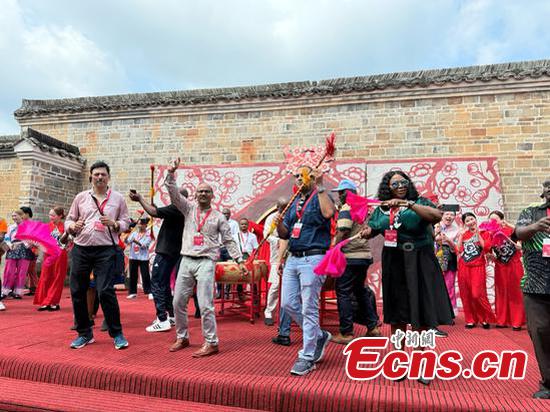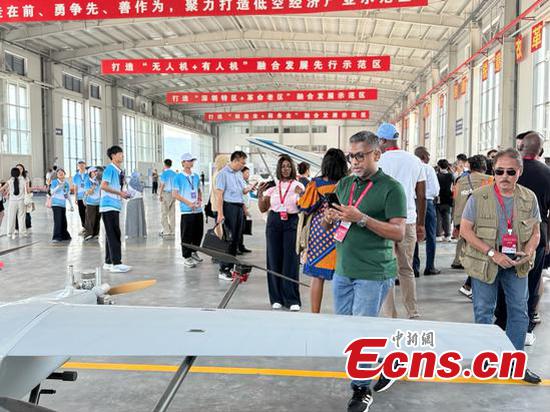Global Journalists explore China story at Belt and Road Journalists Forum
“This is so full of rhythm,” exclaimed William Oloo, Secretary General of Congress of African Journalists, as he tried his hand at a dragon dance. Drum beats echoed through Guanxi Xinwei, a Hakka walled complex in Longnan, Jiangxi Province.
“In Africa, we also dance to drumbeats, but dancing with a dragon to the beat is one-of-a-kind experience!” he said with a broad smile.
This lively moment unfolded in a field visit as part of the 2025 Belt and Road Journalists Forum, held from July 14 to 20, under the theme “Promoting Civilizations Dialogue and Global Modernization with Power of Journalists.”

Understand China in the heart of Hakka heritage
In front of the centuries-old Hakka walled complex, Solange Ayanone, Vice President of Rwanda Journalists Association, felt the pulse of Chinese rural culture up close for the first time.
“I’ve only seen dragon dances in movies before,” she said, adding that “It is unforgettable to witness it in person and feel the strength and wisdom behind it.” She noted that China’s commitment to cultural preservation and heritage left a strong impression on her.
“For me, this is more than a media visit,” she added. “Now I understand that China's greatness stems not only from its economic achievements, but also from its cultural confidence and historical depth.”

Culture is a bridge to the future
“I’m proud to see that the Chinese people have remained true to their values and traditions,” said Yahya Alhassan, President of Nigeria Union of Journalist, during the visit.
He described the Belt and Road Initiative as a bridge between China and Africa, fostering shared experience and mutual benefit. “In our country, we’ve already seen tangible changes from Chinese-built railways and industrial parks.”
Derese Ayele, Executive Director of Editors' Guild of Ethiopia, echoed this view. “Because of the Belt and Road Initiative, we now have infrastructure, jobs, and new opportunities,” he stressed, “People 's lives are quietly but significantly improving.”
Technology is a shared language
At the low-altitude economy industrial park in Nankang District of Ganzhou, Teguh Santosa, Chairman of Indonesia Cyber Media Network, was struck by the pace of innovation in China.
“Drone technology is especially vital in mountainous regions. It can improve healthcare, logistics, and agriculture” he said. “This is another side of the Belt and Road Initiative, which is not just about grand visions, but about practical cooperation that improves lives.”
Santosa attributed China’s technological success to long-term government support and a people-centered approach to development. “In the end, technology should ultimately serve the people.”

The starting Point of Mutual Understanding
"The world is diverse, and so are civilizations," said Zheng Changzhong, a political science professor at Fudan University, at the Jiangxi Provincial Museum, sparking widespread resonance among the visiting journalists.
"Only through understanding each other can we build a shared future for humanity. Inviting journalists to China allows them see the reality, understand the logic, and spread common understanding."
Sudeva Hettiarachchi, Vice Chairman of the Sri Lanka–China Journalists Forum, wholeheartedly agreed. “Culture is the root of national revival and the key to global connection,” he said. “China’s development is deeply rooted in cultural values. It offers a model for the world.”

As the Chinese saying goes, "Even mountains and seas cannot distance people with common aspirations."
The 2025 Belt and Road Journalists Forum, opened in Ganzhou on Saturday, attracted nearly 100 representatives from journalist associations and media outlets from more than 50 countries and regions. Ahead the forum, media trips were arranged to several cities in Jiangxi Province.
